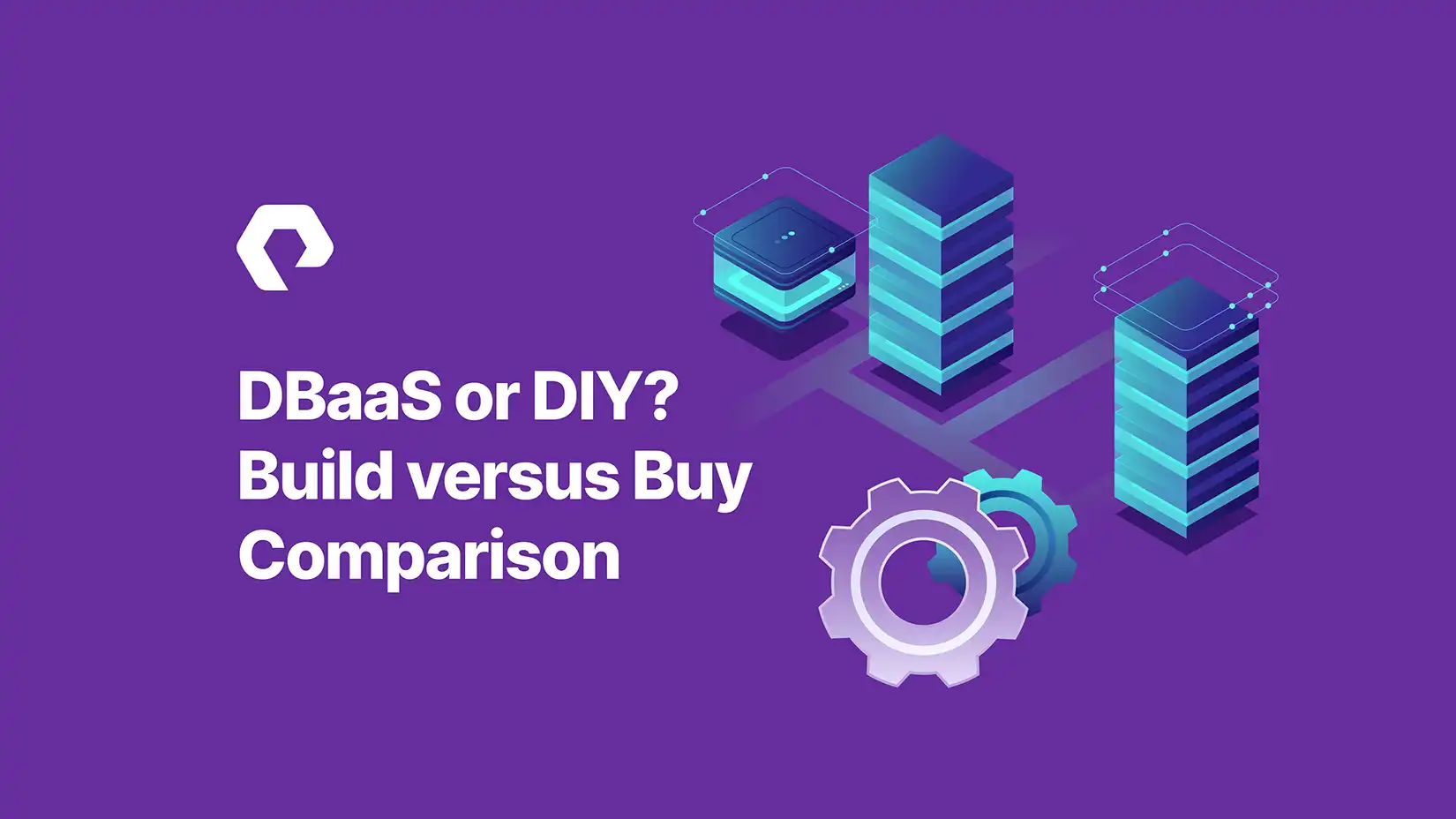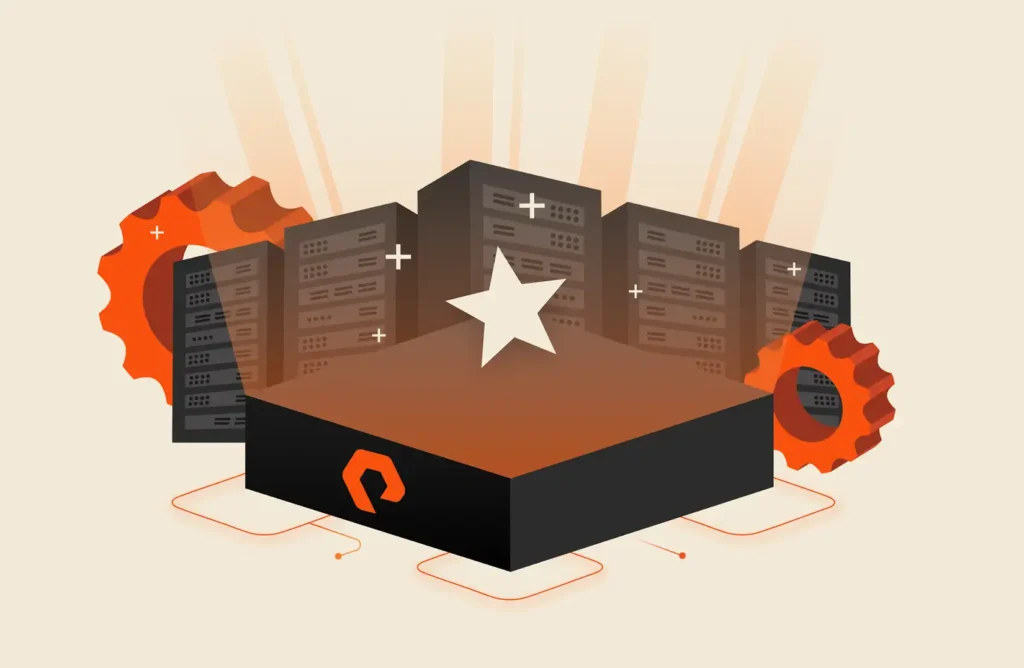Databases are the backbone of any modern organization. Even the smallest business stores information about sales, employee records, and production information, all of which are vital for any organizational decision. The World Economic Forum estimates that by 2025, 463 exabytes of data will be generated each day globally. So, the database is integral to the digital economy’s future.
Organizations reacting to this abrupt data growth have produced various database platforms, broadly categorized as either database as a service (DBaaS) or do-it-yourself (DIY) database solutions.
In this article, we’ll compare these two approaches to determine which is the more cost-effective way to fulfill your organization’s database needs.
Limitations of a Do-It-Yourself Approach
A DIY database platform is custom-tailored to meet an organization or its partners’ specific structured data manipulation needs. When using a DIY database solution, you have control of the physical servers and are responsible for the database design and planning, configuration, integration, staffing, and maintenance.
Although the added control can be appealing, the added complexity can become a burden when upgrading the database. A DIY setup will require additional CAPEX and OPEX resources, such as servers, a new topology design, and more developers and support staff to prepare the required database capacity. As your organization grows, so will the cost and complexity of your database and its integration.
It’s crucial to carefully examine the costs of a DIY approach and weigh its limitations against the benefit of increased control—especially when some DBaaS solutions have customization features that meet the needs of all but the most particular custom setups.
Let’s examine some of the characteristics of a DIY database model.
Cost of Experienced and Capable Developers
Building, deploying, and maintaining a database-as-a-service system requires developers with specialized coding skills, network engineers, and IT support staff. The costs associated with these specialists are less predictable and usually much greater than an equivalent level of service from a DBaaS. In a DBaaS model, your organization offloads unexpected costs to the database provider, who can help streamline the configurations and maintenance of the databases.
Outsourcing staff considerations also neatly sidesteps the challenge of employee retention in the highly competitive software developer market. Developers with specialist skill sets are often heavily incentivized to move between employers, and identifying experienced developers who choose to remain devoted to your organization or project can be challenging.
The loss of a developer in the middle of a critical project can impose a heavy financial burden on your business, both as the project is delayed and as the organization works to find a replacement. A DBaaS provider is generally less dependent on individuals since its team is more specialized as a whole, and retention issues don’t propagate to clients. So, your organization enjoys a separation from the hypercompetitive specialist market, and the service provider shoulders the responsibility of hiring and replacing developers.
Time Is Money
Another significant challenge inherent to any DIY DBaaS—or any proprietary system—is the increased cost of development time. Setting up a DIY solution requires considerable time investment. It requires designing, planning, and configuring a new system from the bottom up. Then it demands physically implementing the system as well.
The usual considerations inherent to any database setup—rules on who can access the database, who will run backups, who will install software updates, and who will patch the operating system running on your servers—become especially involved when assembling a database platform from the ground up. Even when incorporating off-the-shelf components, developing a proprietary platform requires more design, planning, and, critically, much more testing than an established solution. Without an existing operational record and experts to consult, even the usual testing phase can extend your development cycle beyond what is acceptable.
A DIY solution also requires additional organizational overhead. You need approval to fund development and create a team or department to train and support your organization’s end users. This process has the potential to introduce bureaucratic delays as you navigate bottlenecks in executive approval.
This extra development consumes time and labor that your company could instead dedicate to your product. If you’re considering building your own solution, it’s worth carefully researching if the work to develop this infrastructure (which often needs to be functional before product development can begin) is worth the loss of resources otherwise devoted to meeting customer needs.
Maintenance and Incident Response
Implementing a DIY platform also involves devoting attention to maintaining all the associated resources. The increased demands for memory and processing power and the complexity of resource allocation infrastructure introduce an obvious increase in expenditures. These resources also demand attention to security.
Using a custom-built database solution makes troubleshooting and incident response your IT department’s responsibility. Considering that the average data breach in 2021 cost just under $4.25 million and that 16% of breaches in 2020 were attributed to difficulties with funding or executive buy-in for IT security measures, we can’t ignore the potential vulnerabilities that DIY solutions present. Beyond crippling your organization’s operational functionality and harming its reputation, a data breach can also get your organization involved in a legal battle.
Maintaining appropriate access to basic and critical infrastructure also becomes more complicated in a DIY setup. Physical access management becomes relevant for IT support staff. And, in some cases, even ensuring consistent power delivery can become your organization’s responsibility.
Managed and prebuilt DBaaS solutions can help relieve your organization of certain components which play a part in these concerns such as maintenance, physical housing, and incident response costs.
Cost of Staying Current
After the initial development costs, a company hosting and managing its own database platform must factor in one final sustained expenditure: the cost of not falling behind in technology. Maintaining your entire suite of database management software becomes an exercise in “catching the cloud,” especially in hybrid or cloud architectures.
As your organization continues to grow and new technology emerges, you’ll need to keep both software and hardware updated—software to stay ahead in a rapidly developing field and hardware to keep pace with the increasing demands of your software and customers. These upgrades aren’t just a matter of keeping up with passing trends. As the last decade’s surge in data breaches has pointedly demonstrated, the cybersecurity arms race is likely to intensify as the global economy shifts into the cloud.
Database-as-a-Service (DBaaS) Model Considerations
Unlike the DIY model, the DBaaS model offers a simpler database solution. When using DBaaS, you own a database without paying to design and manage the software running it. Depending on the level of customization you require, this can dramatically reduce your time to develop a viable product.
Outsourced Security
Although security remains a top concern for organizations using DBaaS solutions, it presents a different face to practitioners. Locking down your database is less about full-stack technical knowledge and investment and more about trust and partnership with an established specialist.
Rather than designing the system from front to back, you assume part of a shared responsibility where your organization’s work is limited to just your application and its interface with the database. You can then rely on your vendor’s reputation and specialization to manage the rest of the stack. Because an external organization has developed the database solutions, there are integrations and development on the back end.
This lack of development is rarely a loss for your organization, as providers are often highly specialized. But it’s worth familiarizing yourself with your provider’s protocols and with your organization’s role in ethically and securely handling customer data. Some DBaaS solutions can also enable the customer to “bring your own infrastructure,” such that the data doesn’t have to leave your data center for a type of hybrid, specialized DBaaS solution in which you still gain the efficiencies of offloading database-specific knowledge, runtime, maintenance, and more.
Ready to Use, Ready to Adapt
A wide variety of providers offer ready-made solutions minimizing the time investment and fiscal impact of developing new products and services. Each provider can have a dedicated team of professionals working to maintain your database-as-a-service solutions, and the more predictable subscription cost includes fully managed upgrades, installations, and configurations.
Of course, the power to “set and forget” often limits flexibility. If you need an unconventional design, it may not always be easy to customize your service plan to the same level of granularity that you could achieve by building it yourself, although some providers allow for levels of customization and templatization for these needs.
Established modern platform providers like Portworx® offer enough customization options to deliver tailor-made solutions for most use cases. A capable platform should offer features like monitoring, backups, high availability (HA), auto-scaling, and robust security options, bridging the gap between off-the-shelf and custom-built. You can also use these platforms for custom applications or as part of a standardized best practice.
Conclusion
When deciding between DIY and DBaaS solutions for your organization’s database model, it’s essential to carefully examine the database’s entire lifespan for hidden costs. Factors like security or staff costs will significantly affect your organization’s effectiveness and productivity, so be sure to match your database model to your organization’s current and future capabilities and needs.
If you decide to use a DBaaS, consider Portworx Data Services (PDS) for its flexibility, power, and position as the industry’s first DBaaS platform for Kubernetes. PDS enables DevOps engineers to deploy and manage production-grade data services and offers extensive customization features for applications running on any cloud, at low cost, or as part of a system following standardized best practices.
PDS provides fully automated management and support for a broad catalog of data services such as Postgres, Cassandra, Kafka, ZooKeeper, RabbitMQ, and Redis. Check out the Portworx documentation to learn more about using a DBaaS option.
Make DevOps’ Day
See what the industry’s first DBaaS platform for Kubernetes can do for your organization.






